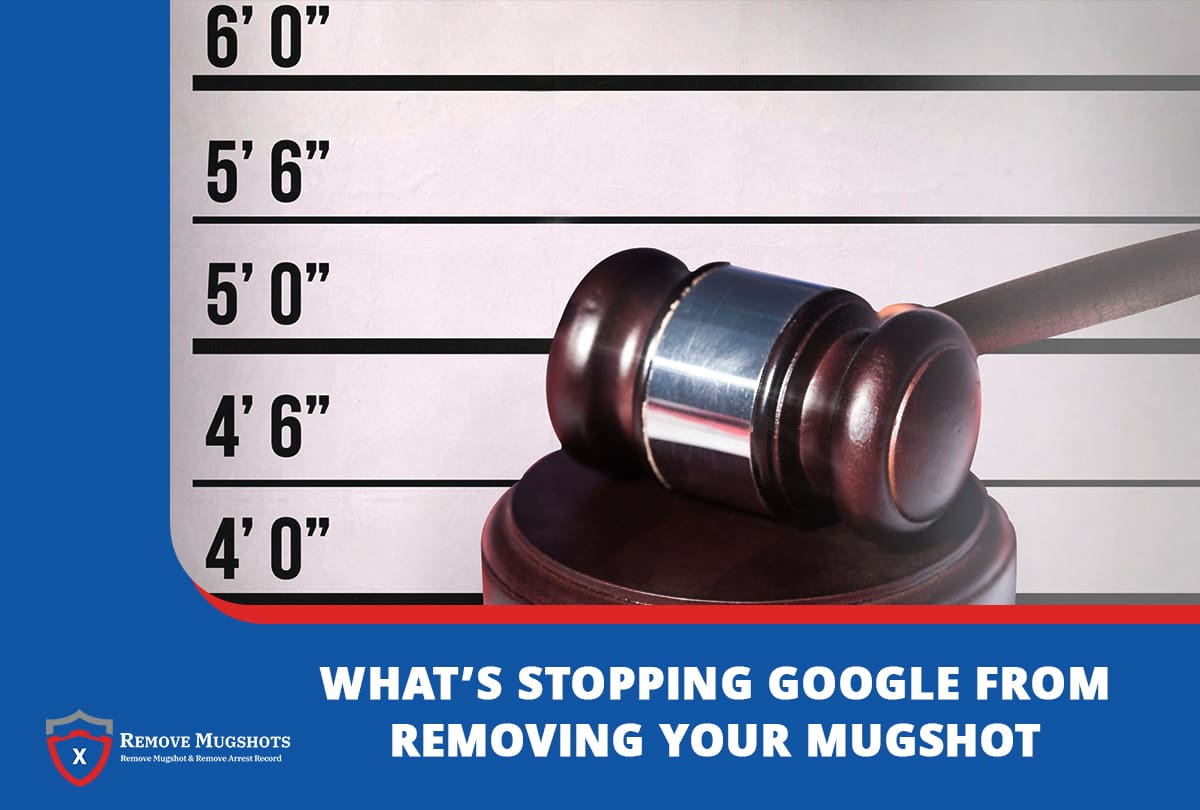What’s Stopping Google from Removing Your Mugshot
July 17, 2025 Mugshot Removal

Mugshots have become a permanent fixture on the internet. Arrest records and booking photos, once buried in courthouse files, are now just a click away. But what happens when that photo becomes the first thing someone sees when they search your name? For many, this isn’t just a privacy issue—it’s a reputational crisis. Despite growing public concern, Google often refuses to remove mugshots from its search results.
What Are Mugshots and Why Are They Public?
Mugshots are booking photographs taken during the arrest process. They typically include the person’s face from the front and side angles and are linked to essential arrest data such as booking date, charges, age, and court jurisdiction. The original purpose of these images was straightforward: to assist law enforcement in identifying and managing individuals in custody.
Over time, however, mugshots evolved into public records. Many jurisdictions believe that transparency around arrests serves the public interest. Today, that same logic fuels searchable databases and online archives—sometimes even mugshot galleries promoted through press releases.
Why Can’t Google Just Remove Mugshots?
Google’s policy on delisting mugshots is rooted in its commitment to access to public information. Unless a mugshot violates a specific policy—such as containing explicit content, private financial details, or unlawful material—Google usually won’t remove it from search results. Even when individuals are found not guilty or have their records expunged, mugshots often remain indexed.
The reasoning? Google isn’t the host of the content—it merely indexes what’s publicly available on other websites. Without a court order or legal takedown request, the company typically declines to act.
The Ethical Problem
While mugshots may be public record, the consequences of having them easily accessible are far-reaching. For the person in the photo, it can mean lost job opportunities, failed housing applications, and lasting embarrassment. Search results influence perception, and when the top results show an arrest photo, they reduce a complex human story to a single, stigmatizing moment.
This is especially true for individuals whose charges were dropped or who were never convicted. In such cases, the punishment becomes permanent even when the legal process didn’t demand it.
Accessibility Concerns
In some cases, mugshot websites also present accessibility challenges. Users with low vision often struggle with site navigation or cluttered layouts that aren’t designed for assistive technologies. Essential information, such as arrest date, counts, and court status, may not be easily accessible using screen readers or keyboard navigation. These barriers can hinder a person’s ability to monitor their digital footprint or apply for the removal of their mugshot.
Why Mugshots Stay Online
Mugshot sites often profit from ad revenue, clicks, or even removal fees. Some may offer a “Click to Remove” button for a substantial cost, turning an individual’s hardship into a profitable business model. Because the images are legally obtained public records, these sites can skirt ethical lines without breaking laws.
Even when someone is sentenced, released, or found not guilty, the content often remains online, unchanged. And since mugshots are indexed by last name, date, or arrest location, anyone with basic information can access them—no context, no follow-up, just an arrest photo and a name.
Why a Court Order May Not Help
Even a court order isn’t a guaranteed fix. While courts can mandate the sealing or expungement of records, that doesn’t automatically remove a mugshot from the web. Site owners may ignore takedown requests unless directly targeted. In some cases, the mugshot gets re-uploaded to mirror sites, continuing the cycle.
Google may agree to delist certain URLs if shown evidence that a case was dismissed or expunged. But that’s often a slow, paperwork-heavy process with no guarantee of success. Meanwhile, the mugshot remains accessible to employers, landlords, or anyone who happens to click.
What You Can Do Instead
If you’re struggling to remove mugshots from search results, here are a few steps that may help:
- Apply for Expungement: If eligible, this legal process can help limit access to your records and begin to clear your digital footprint.
- Submit Legal Requests: Use Google’s legal removal form to submit court orders or other documentation to skip unwanted search results.
- Hire a Reputation Management Service: Professionals can help suppress negative content and improve your online presence by pushing positive content.
- Push Positive Content: Create new web pages, blogs, or social media profiles to replace outdated and unwanted content, thereby maintaining a strong online reputation.
Final Thoughts
Mugshots are often presented as simple data: an image, a name, a date. But behind every arrest photo lies a complex story, and the internet doesn’t always consider context. While legal and technological frameworks lag, individuals are left to navigate the fallout on their own.
Whether you’re trying to clear your name or support someone affected, it’s important to understand both the power and the limitations of search. Because when a single image can shape someone’s future, the stakes couldn’t be higher.



